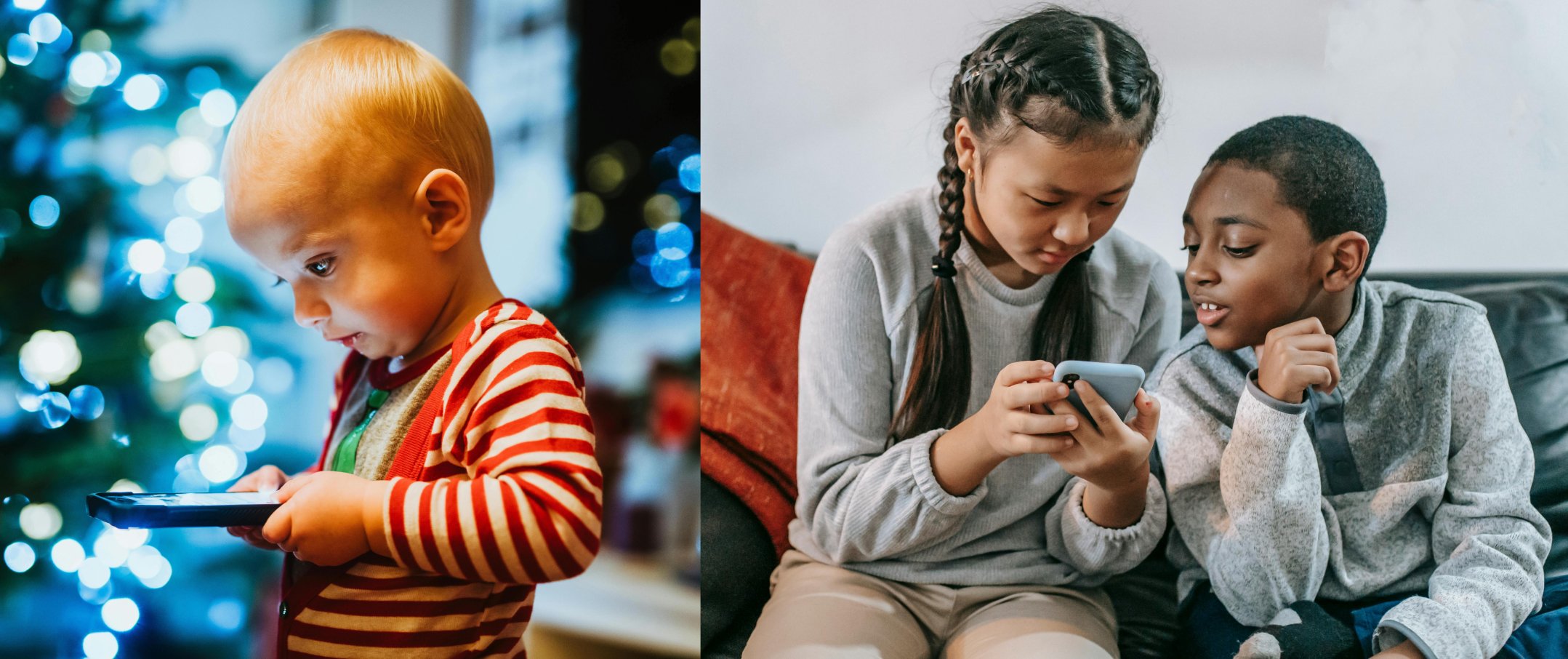
Designing a meditation experience for children across different age groups
Background
The Good Luck Yogi app was created by a spiritual devotee to introduce mindfulness and spirituality to children. Although I had never designed a digital product for kids before, this project provided an excellent opportunity to delve into the unique aspects of children's psychology, perception, and interaction with digital objects. It allowed me to learn and apply best practices for designing digital products for kids.
As the lead product designer for this project, my responsibilities included identifying areas for improvement in the app, gathering valuable user insights, and enhancing both the UX and UI within a specific timeframe. This experience was not only challenging but also immensely rewarding, as it combined creativity with a deep understanding of young users' needs and behaviors.
Project Challenge
This project presented the challenge of aligning stakeholder goals and business requirements with user needs. It involved identifying diverse user personas across various age groups, understanding the experiences of both parent-users and child-users, and delivering exceptional experiences tailored to each user group.
Understanding the business goals
The project began with comprehensive discussions with the founders to understand their business objectives and desired outcomes for the product. Through stakeholder interviews, I identified the primary goals of the app:
Teach children how to meditate.
Engage children with an innovative learning experience.
Help children develop a consistent meditation habit.
Stakeholders aim to increase the number of new users, encompassing both free and paid memberships. The objective is to boost the annual subscription rate by 40%.
User Research
Initially, the founders developed a Minimum Viable Product (MVP) as a proof of concept. We tested this MVP with parents and children to gather feedback, suggestions, and validate our assumptions and user needs.
Key observations from the user testing revealed that the primary user is the parent, as they are responsible for downloading the app, creating an account, and selecting a subscription. Additionally, parents often choose the meditations to play for their children.
Feedback from the parent user persona included the following insights:
The homepage experience felt disjointed due to excessive content and excessive scrolling.
Navigation issues were prevalent, with some elements being broken and the points collection page feeling confusing due to non-clickable UI elements.
Parents often played random meditations for their children without knowing which one would be the best fit based on age, context, or time of day.
To summarize, the user feedback indicated that the content structure was lacking, and the overall experience was not smooth or enjoyable.
Secondary Resarch
This was my first experience designing a product for children. To gain a deeper understanding, I conducted extensive research into child psychology, including how they perceive the world and their unique limitations. Additionally, I studied best practices for designing for children, comparing them with those for adult designs.
Designing for Children vs. Adults: Key Differences and Considerations
I aimed to learn how to design a product for a young audience and understand how this digital experience differs from designing for adults. Through my research, I learned that designing for children presents unique challenges and opportunities due to their distinct characteristics and needs. Recognizing these differences is crucial for creating effective and engaging user interfaces for young users.
Physical Differences
One of the primary considerations when designing for children is their physical abilities. Younger children often have developing motor skills, which affects how they interact with technology. For instance, they might type slowly or struggle with precise mouse control. Designers need to accommodate these limitations by creating interfaces that are easy to navigate and interact with, considering the fine motor skills of their young users.
Similarities Between Children and Adults
Cognitive Differences
Children's cognitive abilities vary significantly from adults, impacting their interaction with digital products. Their mental capacities differ based on age, leading to shorter attention spans and a greater likelihood of becoming bored or frustrated quickly. To maintain engagement, designs should incorporate interactive elements, such as animations and sound effects, which appeal to children. Additionally, providing constant feedback and introducing small challenges can keep young users interested and focused.
Consistency
Both children and adults appreciate consistency in design. A consistent design pattern helps users of all ages learn to navigate an app or website more quickly and efficiently. This principle of intuitive navigation is universally applicable, regardless of age.
Safety Considerations
Children might not fully understand the consequences of their actions within an app or website. Therefore, it is vital to design interfaces that clearly communicate what will happen next, ensuring transparency. This is particularly important for in-app advertisements and purchases. According to research by Nielsen Norman Group, children often struggle to distinguish between advertising and genuine content. Designers should avoid misleading young users and ensure that any promotional content is clearly identifiable.
Simplicity
Just like adults, children prefer simplicity in design. Overly complex interfaces with too many elements can confuse users, making it difficult for them to determine which components are interactive. Streamlining design elements to ensure clarity and usability benefits both children and adult users.
Age Factor
When designing digital products for children, it's essential to consider their cognitive development stages, as described by Piaget's theory. Understanding these stages helps tailor designs that resonate with young users' perceptual and cognitive abilities.

Ages 2-6: Preoperational Stage
Children in this age group, typically preschoolers to first graders, are in the preoperational stage of cognitive development. At this stage, their thinking is dominated by symbols and visuals, and their vocabulary is limited. Therefore, when designing for this audience, it's crucial to minimize text and rely heavily on symbols and visuals that are easily recognizable and meaningful to them.
Ages 7-9: Concrete Operational Stage
Children aged seven to nine are in the concrete operational stage. They develop logical thinking and can reason through various scenarios. Their reading skills and vocabulary expand, allowing them to understand more complex statements. For this age group, while symbols and imagery remain vital, there should be an increase in the use of textual content. Designs should focus on simplicity, balancing visual elements with more text to enhance comprehension.
Ages 9-11: Advanced Operational Stage
As children approach ages nine to eleven, they become more proficient with touchscreens and familiar user-interface design patterns. Their vocabulary and reading comprehension skills are more advanced, enabling them to understand and process more complex information. While icons and imagery are still important, designers can rely more on text for communication. Introducing simple, hierarchical elements in the design can help older children manage multiple concepts simultaneously and enhance their user experience.
Key Considerations for Designing Products for Children
By studying how children interact with objects and learn new things, I gained valuable insights and key considerations for designing for a younger audience.
Immediate Engagement: Children have limited patience, so designs should offer instant gratification to maintain their engagement. For example, games can incorporate rewards at each step of progression to keep them motivated.
Clear Symbols: Children interpret icons literally, so use symbols that directly convey their meaning. For instance, a hamburger icon for menus represents food-related content that children can easily grasp.
Storytelling Approach: Given children’s developing comprehension, storytelling in designs helps bridge gaps in understanding. Design elements should unfold like a narrative to enhance engagement and comprehension.
Encouragement and Rewards: Children benefit from frequent positive reinforcement and interactive elements. Break content into manageable chunks and integrate gamified features like badges and rewards to sustain motivation and interest over time.
How Might We…
Create an engaging and intuitive digital platform that supports children of varying age groups in learning meditation and maintaining their interest through interactive content.
Competitive analysis exploration
I conducted secondary and competitive research to understand the best practices in wellness, mindfulness, and meditation app design. Since this app is for kids, I couldn't directly apply the same best practices seen in some of the most successful apps in the industry. For instance, using small fonts and presenting a lot of content on the home and category pages would overwhelm kids, making it difficult for them to digest the information and take action.
Instead, I focused on best practices in product design that could also apply to children. These included information architecture, consistency, and incorporating bright, colorful images, which made the content stand out and enticed children to click and explore.
I also examined apps designed for kids. While some had interesting designs, they weren't always tailored for younger users. I adapted relevant elements from these apps to create an engaging and intuitive experience for our young audience.
Age-Group Tailored Content Presentation
After interviewing parents, I discovered that they often play meditations and other media content for children aged 6 and younger. With this insight, I chose to focus on two specific age groups: 7-9 and 9-11.
To address the challenge of presenting content suitable for different age groups, I devised a solution involving an onboarding question directed at parents. By asking parents to specify their child's age group, the app customizes the user experience accordingly. Given the project's tight timeline, I prioritized designing for these two primary user groups: 7-9 and 9-11/adults.
Exploration
The stakeholders expressed a need to showcase categories beyond meditations. My objective was to explore the presentation of alternative content categories and organize them accordingly. While the primary focus remained on enhancing the meditation experience for kids, I also aimed to provide users with the ability to explore diverse content options on the homepage.
Feature Prioritization
The stakeholders liked the concept of incorporating an age-based questionnaire to divide user groups and provide tailored experiences. However, they wanted to proceed quickly and enhance the current MVP with essential features and updates. They decided to launch the app for 7-11 and 11+ age groups initially, with plans to implement age-specific experiences in version 2.0.
For this launch, my focus was on restructuring and organizing the content effectively. I designed tab buttons for users to switch between different content types. The goal was to create an experience where users can easily scan and select content.
Additionally, the stakeholders wanted to integrate a point collection system into the meditation experience. After each meditation or media content session, users would see the number of points collected, along with their total accumulated points over time. This feature aimed to enhance user engagement and provide a sense of achievement.
Defining User Journeys and Content Architecture for Parent and Child Users
Special safety measures
From my research, I learned that IAP (In-app purchases) are features designed for adults; therefore, any transaction involving real money must be protected by a parental gate. Similarly, settings pages containing sensitive information like account details, credit card information, or links to external policies should also be secured behind a parental gate.
I designed a security gate requiring the parent to enter and submit their account password. This approach eliminates the need for parents to remember multiple passwords, using the same one for both the initial setup and subsequent access. Additionally, the child will not know the parent's password, as the only way to update it is through the settings or via email. This ensures that the action is simple and quick for the parent to perform but remains not accessible for a child.
Final Solution
More details are coming up soon :)
PREVIOUS CASE STUDY
NEXT CASE STUDY









